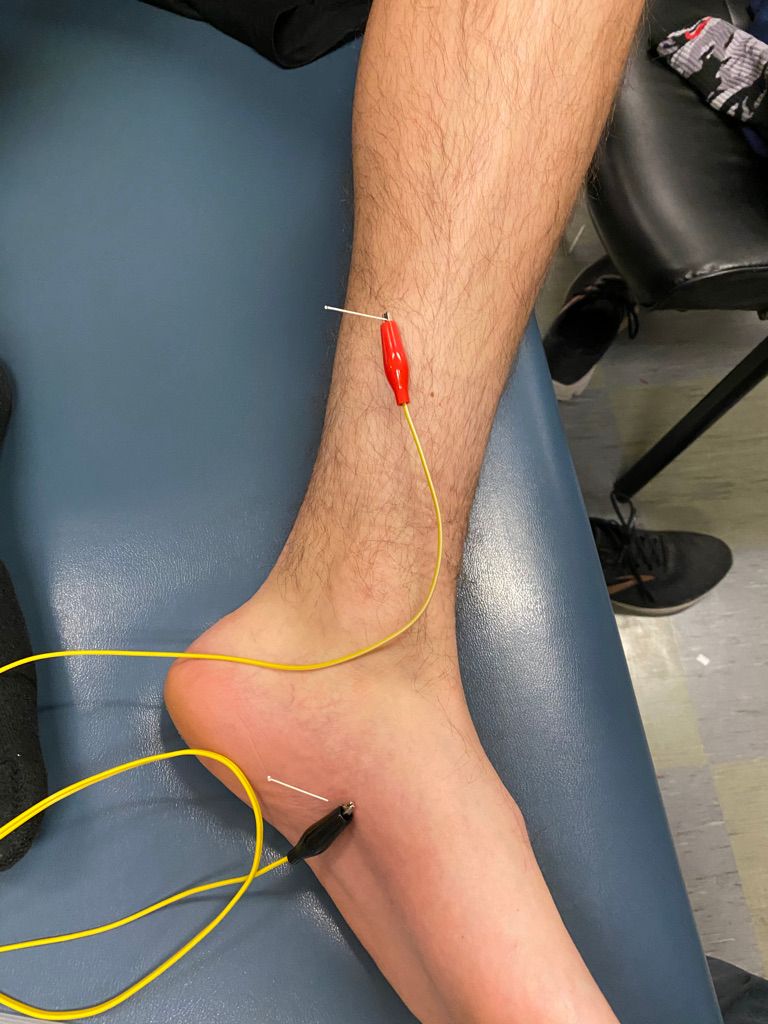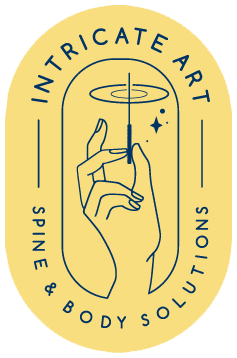
Dry Needling: Benefits of Low-Frequency Stim for the Autonomic Nervous System
The Autonomic Nervous System (ANS) has many amazing functions we currently understand to some level, and it has more we are just beginning to understand or do not yet comprehend. Unfortunately, measuring and monitoring the ANS is not a simple task, and the studies are not cheap.
Related: Benefits and Impacts on the Autonomic Nervous System
Microneurography is currently the gold standard ANS test for the purposes of studying DN or acupuncture. This test involves inserting a tungsten needle electrode directly into nerves in the limbs or face and measuring certain impulses via a device connected to a computer. Heart Rate Variability is another less precise but more common and easier way to monitor the ANS. I think it’s crazy that we do not yet have a more precise and simpler way of testing the ANS as it is such an important thing to understand for all types of medical complications. Hopefully, we will soon have some new technology that will allow more people access to these tools in order to increase the amount of quality research being done specifically on the ANS. It would be totally awesome to have some unit available for needlers to get certified with, and it would really advance the profession.
Human Response to Impairment + Dry Needling
The typical human response to impairment is an elevation of the sympathetics and a depression of parasympathetics. This can be visibly witnessed in many chronic pain patients who present as anxious, twitchy, and uneasy. Difficulty sleeping, hair loss, and abnormal pilomotor and sudomotor reflexes can all be symptoms of neuropathic dysfunction. To put it simply, if your ANS is not functioning properly, neither is anything else in your body. This is a vitally important system that is amazingly controllable with needles in the proper hands.
Think about all of the autoimmune diseases that are extremely detrimental to our well-being. Diabetes, PD, ALS, MS, psoriasis, and a ton of others all significantly impair the ANS. Or does significant impairment of the ANS lead to those impairments? That is a very interesting question. Stress is another thing that elevates sympathetics and depresses parasympathetics, and it is hugely damaging to our bodies over a period of time. The ability to regulate the ANS with needles is a powerful tool that can be utilized to treat a wide variety of conditions. I truly believe that every human being on earth would benefit from being needled by a skilled needler.
Low-Frequency Stim + Dry Needling for Autonomic Nervous System
When I first started needling about 8 years ago, I hardly ever used stim with my treatments. The only time I really used it was when I wasn’t really getting the results I was looking for and wanted to add a little something extra to the treatment. Now, if I wasn’t a dumb-dumb (I am a certified dumb-dumb, by the way, and my wife tells me this daily ;)), I would have realized right away that I was using stim because I knew that it added something to the treatment. Even though I was getting good results the majority of the time without stim, I should have realized that including stim with my treatments would have improved the efficacy of all my treatments. See? Dumb-dumb. But I finally figured it out. Now I use stim with almost all of my treatments because I find that it does consistently improve the efficacy.
Low frequency stim (1-5 Hz) is consistently cited throughout research to increase the release of neuropeptides, serotonin, endogenous opioids, and oxytocin in the CNS. These substances are required to make functional changes in organ systems. Low frequency stim increases the effect DN has on the ANS. The central hypothalamic β Endorphin system plays a central role in autonomic regulation. One of the substances released from the hypothalamus is β – endorphin. This substance has an effect on the vasomotor center in the medulla and stimulates a decrease of sympathetic tone as seen through regulation of BP and decreased muscle sympathetic nerve activity (MSNA).
I have done an experiment with a patient of mine who had recently had heart surgery. The MDs were having a difficult time controlling his BP, which was consistently high. I asked the patient if we could do an experiment, and I told him what I thought would happen. Right when he came into the clinic, after his BP normalized to 150/115 (ha-ha), I put 2 needles onto the base of his C2 spinous bilaterally. In 5 minutes, his BP was 133/103. This is the expected outcome of doing something like this, and one of the reasons is the induced release of β - endorphin from the hypothalamus and anterior pituitary that decreases sympathetic tone and regulates BP and MSNA. Calcitonin gene related peptide (CGRP) is another substance released into the bloodstream during DN, which acutely causes microvascular dilation. This also serves to lower BP.
These are just a few of the really cool things that DN does to our bodies, and it helps us in many ways. I will continue writing about the ANS in upcoming entries.
Here are some additional references:
Gallego-Sendarrubias, G.M., Rodríguez-Sanz, D., Calvo-Lobo, C. and Martín, J.L., 2020. Efficacy of dry needling as an adjunct to manual therapy for patients with chronic mechanical neck pain: a randomised clinical trial. Acupuncture in Medicine, pp.acupmed-2018.



